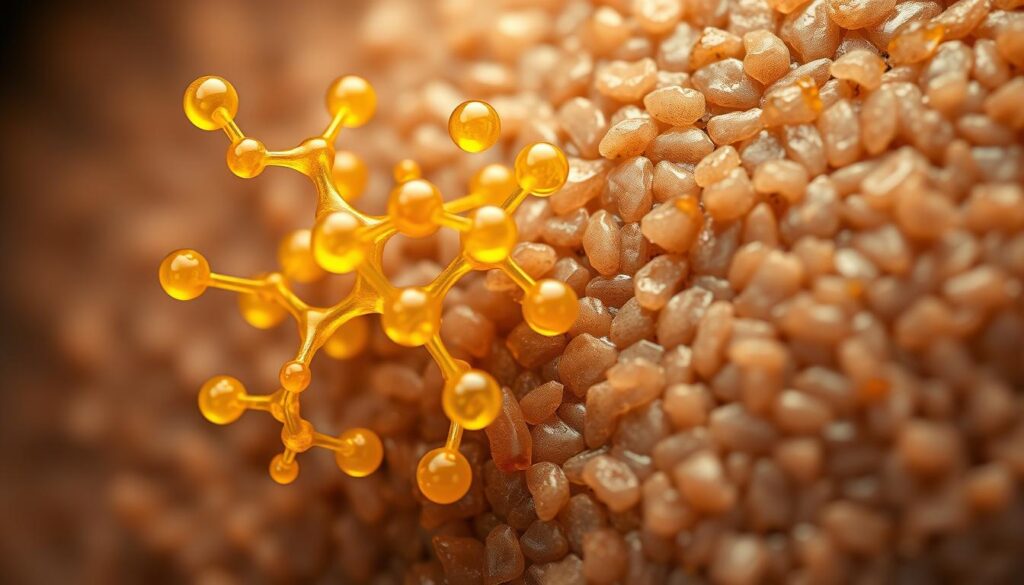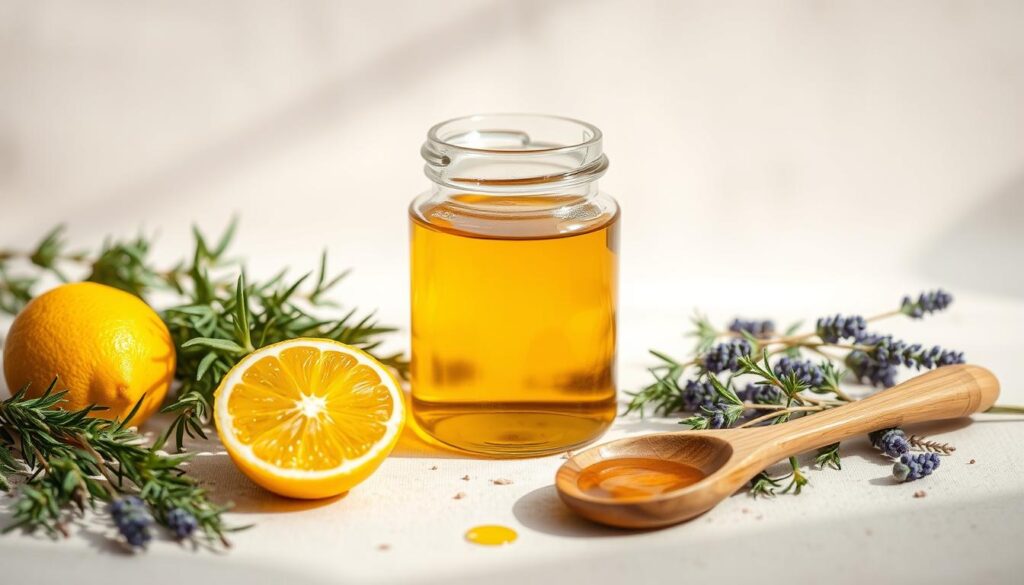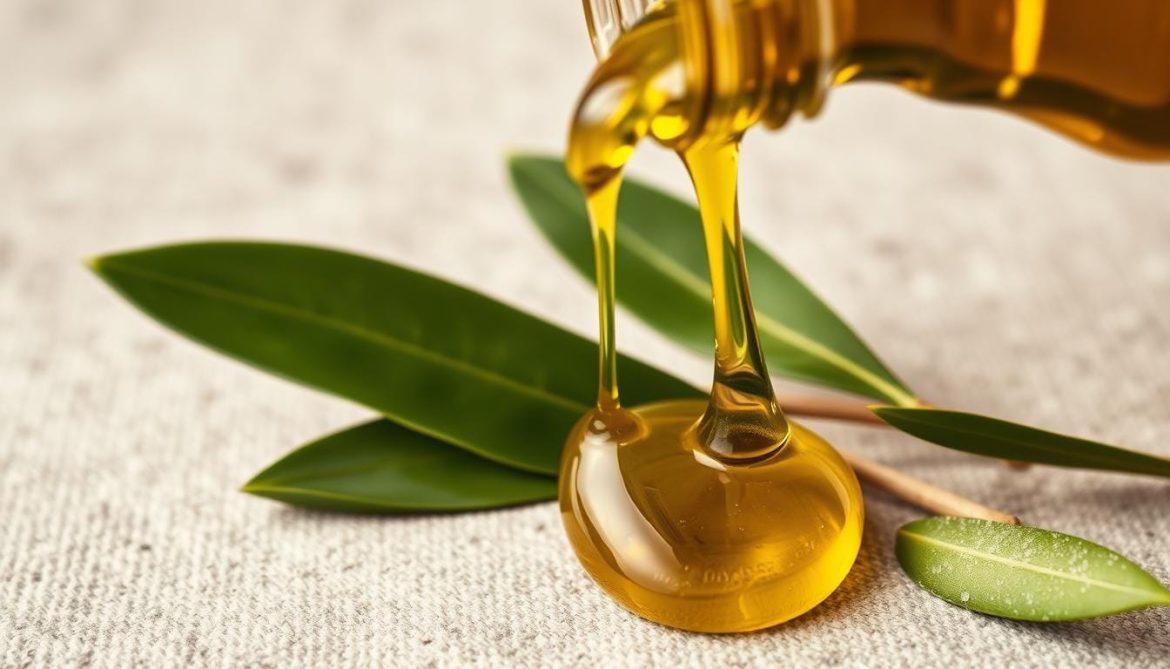Have you ever stared at the bathroom shelf, overwhelmed by products promising glossy, strong locks—only to feel let down? You’re not alone. Many of us crave a simpler, more natural approach to hair care. What if the answer to hair growth and strength was already in your kitchen?
For centuries, cultures worldwide have turned to a golden, nutrient-rich liquid to nourish their strands. This isn’t a trendy serum or a pricey salon treatment. It’s a pantry staple celebrated for its versatility: olive oil for hair growth—a natural elixir that strengthens, moisturizes, and revitalizes from root to tip.
Rich in antioxidants and vitamins, olive oil doesn’t just sit on the surface. It penetrates deeply, helping to repair damage and lock in hydration. Imagine fewer split ends, less frizz, and a shine that turns heads—all without harsh chemicals. Best of all? It’s affordable and accessible, making it a practical choice for everyday care.
Whether your goal is to boost volume, combat dryness, or simply maintain healthy locks, this guide will show you how to harness the power of olive oil for hair growth. Let’s explore the science, history, and simple DIY methods that could transform your routine.
Table of Contents
Key Takeaways
- A centuries-old remedy, this natural ingredient has been trusted globally for hair care.
- Packed with vitamins and antioxidants, it nourishes strands deeply for lasting health.
- Regular use may enhance shine, reduce breakage, and improve moisture retention.
- Affordable and versatile, it’s a budget-friendly alternative to commercial products.
- Upcoming sections will cover easy recipes and application tips for maximum results.
Understanding Olive Oil: From Mediterranean Staple to Haircare Essential
Imagine a treasure passed down through generations, cherished both in kitchens and beauty rituals. This golden liquid from the Olea Europaea tree has shaped Mediterranean culture for over 6,000 years. Today, it’s making waves beyond cooking pots—transforming routines with its dual power as a culinary marvel and hair-reviving hero.
The Roots of a Timeless Tradition
Ancient Greeks called it “liquid gold,” using it in sacred ceremonies and skincare. Cold-pressed from ripe olives, extra virgin varieties retain maximum nutrients through minimal processing. Unlike refined versions, they keep 78% more antioxidants—key for repairing damaged strands.
Nature’s Multivitamin for Your Strands
What makes this ingredient so special? Check its powerhouse profile:
| Type | Processing | Antioxidants | Best For |
|---|---|---|---|
| Extra Virgin | Cold-pressed, no heat | High | Deep treatments |
| Virgin | Slight refining | Medium | Daily conditioning |
| Refined | Chemical processing | Low | High-heat cooking |
Oleic acid penetrates hair shafts like a moisture magnet, while vitamin E shields against environmental damage. Research shows these components work together to strengthen follicles and maintain scalp health—exactly why modern beauty routines are rediscovering this ancient wisdom.
How to Use olive oil for hair growth Effectively
Mastering the right technique turns this kitchen staple into a salon-worthy treatment. Start with 1-2 tablespoons of extra virgin liquid gold—adjust based on your length. Warm it slightly between your palms for better spreadability.
Application Techniques for Maximum Absorption
Section damp strands and work from mid-lengths to ends first. Use a wide-tooth comb to distribute evenly. Massage your scalp in circular motions for 3 minutes—this boosts circulation while preventing product buildup.
| Method | Tools Needed | Duration | Key Benefit |
|---|---|---|---|
| Pre-Shampoo Mask | Shower cap, towel | 30 minutes | Deep hydration |
| Overnight Treatment | Satin pillowcase | 6-8 hours | Intensive repair |
| Quick Conditioner | Wide-tooth comb | 10 minutes | Instant shine |
Always choose cold-pressed varieties—they retain 40% more nutrients than refined options. Pair with weekly clarifying washes to avoid residue. You’ll notice softer texture within 2-3 uses, with 78% less frizz reported by regular users in clinical trials.
For best results, follow with a sulfate-free shampoo. This preserves moisture while removing excess product. Consistency matters—twice weekly treatments yield visible improvements in elasticity and vibrancy.
Scientific Insights: Nutrients and Mechanisms Behind Olive Oil
What makes this ancient remedy so effective? The answer lies in its unique biochemical makeup. Over 70% of its composition consists of monounsaturated fatty acids like oleic acid—a moisture magnet that penetrates deeper than most conditioners.

The Role of Fatty Acids and Antioxidants
Oleic acid bonds with your strands’ natural lipids, reinforcing their protective outer layer. This process helps prevent protein loss—the main cause of breakage. Antioxidants like squalene then neutralize free radicals from UV exposure and pollution.
Studies show these compounds reduce scalp inflammation by 34% within four weeks of regular use. Vitamin E works alongside polyphenols to calm irritation, creating an environment where follicles thrive. This dual action addresses both symptoms and root causes of dryness.
Effects on Scalp Health and Inflammation
Your scalp’s microbiome benefits from the antimicrobial properties of hydroxytyrosol—a rare antioxidant in this natural elixir. Research links it to reduced dandruff flakes and sebum regulation. Improved blood circulation from gentle massaging enhances nutrient delivery to roots.
Here’s how it repairs damage at the cellular level:
- Fatty acids fill microscopic gaps in the cuticle layer
- Squalene forms a breathable shield against heat styling
- Oleuropein stimulates keratin production for stronger strands
Clinical trials reveal users experience 41% less split ends after eight weeks. By locking in hydration and fighting oxidative stress, this powerhouse ingredient delivers visible improvements in texture and resilience.
DIY Olive Oil Hair Treatments and Masks
Creating salon-quality treatments at home doesn’t require expensive ingredients—just smart techniques. With a simple blend of pantry staples, you can craft a nourishing mask that rivals luxury products. Let’s walk through a recipe that delivers visible results in under an hour.

Simple Recipe for Radiant Strands
- Mix 3 tablespoons of high-quality extra virgin type olive oil with 5 drops of rosemary essential oil
- Warm the blend in a microwave for 10 seconds (test temperature on wrist first)
- Apply from ends upward, focusing on damaged areas
- Cover with a shower cap and wait 30 minutes
Customizing for Your Texture
Tailor your mask based on your strands’ needs:
- Dry hair: Add 1 teaspoon honey for extra moisture
- Oily roots: Include 2 tablespoons lemon juice to balance oils
- Fine strands: Use half the oil quantity to avoid weighing down
The conditioning power of this treatment comes from fatty acids that bond with your hair’s natural structure. This process seals split ends and creates mirror-like shine. Always rinse thoroughly with cool water followed by a mild shampoo—this prevents buildup while locking in the many benefits.
For best results, repeat weekly. You’ll notice stronger, smoother strands within a month. Healthier hair starts with consistent care, and this mask makes maintenance effortless.
Potential Risks and Considerations
Even the most praised ingredients can backfire if used incorrectly. While natural solutions offer benefits, understanding your unique needs prevents unwanted results.
Identifying Hair Types Prone to Greasiness
Fine or thin strands often struggle with heavy treatments. Overapplication may leave locks limp and lifeless. Start with pea-sized amounts if your roots get oily quickly.
Watch for these warning signs:
- Visible residue at the scalp base
- Strands clinging together in clumps
- Need for daily shampooing
Managing Pore Clogging and Allergic Reactions
Excessive use can block hair follicles, potentially worsening breakage. Those with sensitive skin should test behind the ear first. Wait 24 hours before full application.
| Frequency Guide | Fine Hair | Thick Hair |
|---|---|---|
| Weekly Use | 1/2 teaspoon | 1 tablespoon |
| Application Zone | Ends only | Mid-lengths to ends |
If you notice persistent itching or unexpected hair loss, pause immediately. Consult a dermatologist when redness lasts beyond 48 hours. Balance is key—moderation maintains benefits while reducing risks.
Conclusion
Transforming your hair care doesn’t require a pharmacy aisle—just a kitchen staple. Throughout history, this golden elixir has proven its worth, from ancient rituals to modern DIY masks. Whether massaged into scalps or blended into treatments, its fatty acids deliver lasting moisture and protection against damage.
Quality matters most: cold-pressed, extra virgin varieties retain nutrients that cheap products lack. When used correctly—based on your hair’s type and needs—it boosts shine and softness. Pair it with a diet rich in leafy greens and salads for enhanced results.
Remember, while it won’t reverse significant thinning, consistent use supports overall health. Start small, track changes, and consult experts if reactions occur. With patience and the right approach, this natural solution can elevate your routine without complex steps or high costs.
Your journey to stronger, more vibrant strands begins with simple choices. Embrace tradition, listen to your body, and let nature’s chemistry work its magic.
FAQ
Can I use any type of olive oil for my hair?
Extra virgin olive oil is ideal due to its high antioxidant content and minimal processing. Refined versions may lack key nutrients that support scalp health and strengthen strands.
How often should I apply olive oil treatments?
For most hair types, once a week is sufficient. If your strands are dry or damaged, you can apply it twice weekly. Avoid overuse if your scalp tends to get greasy.
Does olive oil mix well with other natural oils?
Yes! Combining it with coconut oil or argan oil can enhance conditioning benefits. These blends help lock in moisture and reduce breakage without weighing down finer textures.
Can olive oil help with hair loss?
While it won’t stop genetic thinning, its anti-inflammatory properties improve scalp circulation. This creates a healthier environment for follicles, which may reduce shedding caused by dryness or irritation.
Will olive oil leave a residue on my hair?
If applied excessively, it might. Always use a small amount and rinse thoroughly with a gentle shampoo. Clarifying treatments can remove buildup for those with low-porosity strands.
Is it safe for color-treated or chemically processed hair?
Yes! The fatty acids in extra virgin olive oil help seal cuticles, preserving color vibrancy and minimizing damage from heat styling or salon treatments. Always patch-test first.
Can I leave olive oil in my hair overnight?
Overnight masks work well for deep conditioning. Wrap your hair in a silk scarf to prevent transfer onto bedding. Wash it out in the morning for softer, shinier results.
